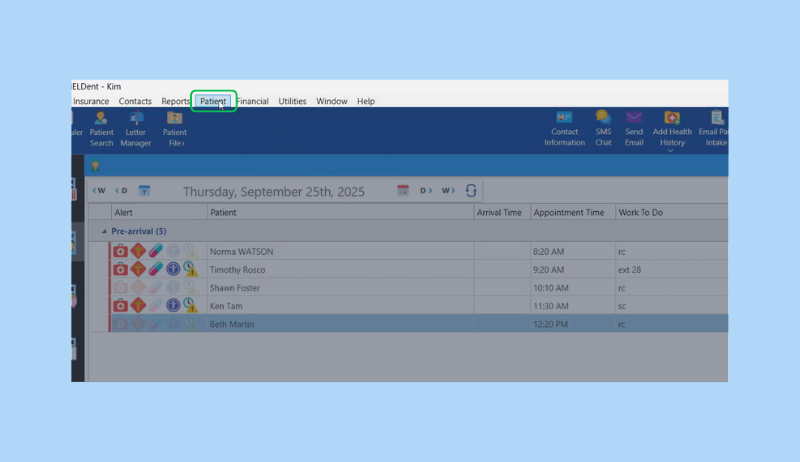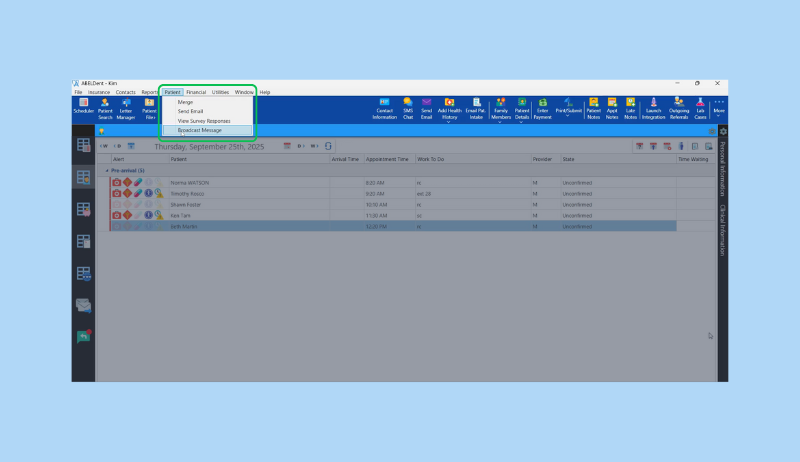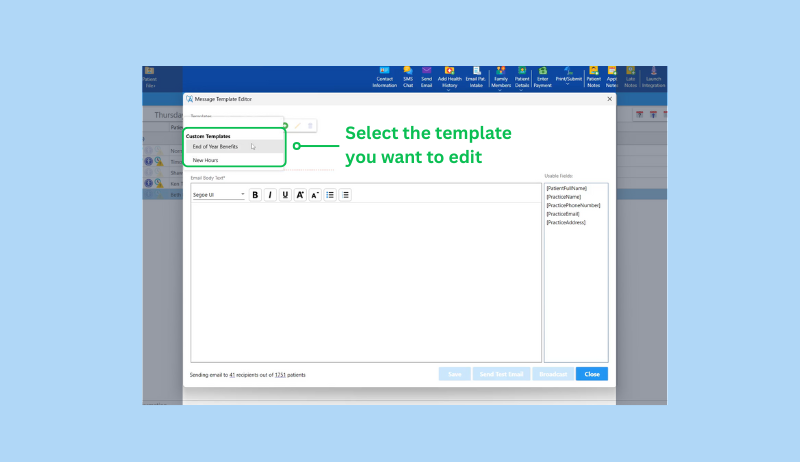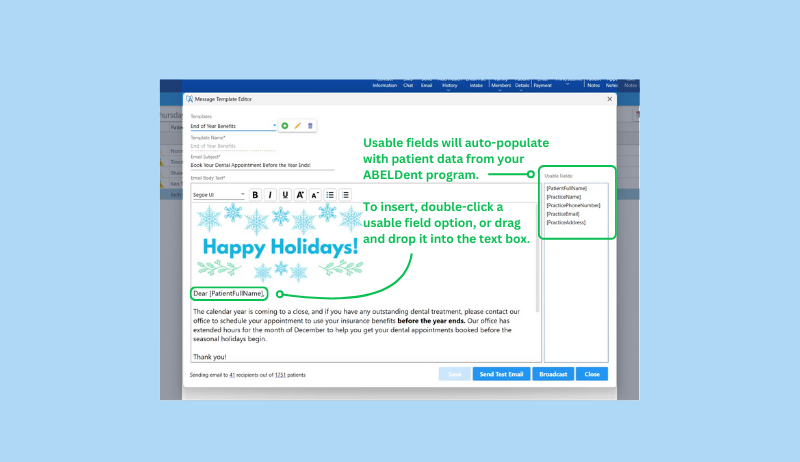As the 2025 calendar year comes to an end, keep your schedule full by encouraging patients with outstanding dental treatment to book their appointments.
A batch email reminder can motivate patients to use their remaining insurance benefits before many plans reset in the new year. With ABELDent’s Broadcast Messaging feature, part of ABELDent PCS (Patient Communication System), you can easily reach out to all patients who have consented to receiving communications in your ABELDent system at once. Broadcast Messaging is a simple and useful tool for reaching all your patients who have consented to receive messages from your practice.
Using Broadcast Messaging, your practice can create and save various customizable templates that can be edited at any time. You can use these templates to send messages to your patient base about a variety of topics, including announcing staffing changes (e.g. a retiring team member or welcoming a new team member on board), office hours changes (e.g. reduced hours or extended hours based on holiday seasons), unexpected office closures due to inclement weather or emergencies, and more. Watch our video below to see how to open, edit, and send Broadcast Messages in ABELDent.
Regarding CASL Compliance and Patient Consent
Please note that ABELDent PCS is CASL compliant, meaning any Broadcast Messages you send will only be sent to patients who have given consent. Consent options must be set for each individual patient in their patient record to maintain CASL compliance.
To use Broadcast Messaging, you will need to ensure that the feature is enabled in your Authorization Manager under the Patient Communication category.

Once you have enabled Broadcast Messaging, open your ABELDent program as usual. Reference our video above or read the walkthrough below to learn how to use Broadcast Messaging in ABELDent.
How to Use Broadcast Messaging – Walkthrough
- In your ABELDent program, select the “Patient” option from the toolbar at the top of the program.

- Click the “Broadcast Message” option to create templates, edit existing templates, and send Broadcast Messages to your patients.

- To create a new template, click the green “add” icon.
- To edit an existing template, select the one you want to edit under the “Templates” drop-down.

- Once your template is open, click the pen icon to start editing your Broadcast Message.
- You can either double-click or drag and drop usable fields into your email to personalize your messages to patients. For example, you can insert a patient’s first name usable field to ensure your greeting displays their name upon receipt.

- You can insert images by utilizing keyboard shortcuts (CTRL-C the image and CTRL-V it into the body of the email). You can format your message with bold, underlined, and italicized options. You can change font sizes and organize content into bulleted and numbered lists.

- When you have finished editing your Broadcast Message template, click the Save button. Ensure you send a test email to yourself or your practice to ensure there are no errors, and to ensure the formatting appears how you want it to look. When you are ready to send your message to your opted-in patient base, click the “Broadcast” button.
As you can see, using ABELDent’s Broadcast Messaging is a simple process, yet it can be a powerful tool for reaching out to many patients at once.
As mentioned, Broadcast Messaging is a feature of ABELDent PCS, our patient communication system. ABELDent PCS is included in our newest version, ABELDent version 15 (also known as ABELDent Cloud and Local Plus). ABELDent v15 has several convenient features built into the program that help your whole team save time and complete tasks more efficiently. ABELDent’s new features also help you cater to your patient base better, with features such as two-way texting and secure, customizable online forms to make completing forms easier than ever for patients. If you are interested in learning more about updating to ABELDent version 15, please reach out to our team via 1-800-267-ABEL (2235) and press 1 to speak to one of our team members, or click here to request more information.


